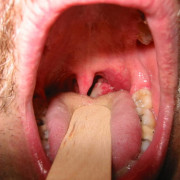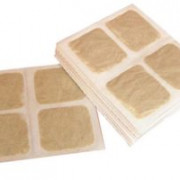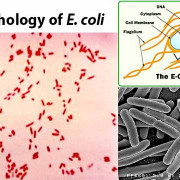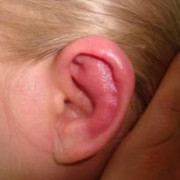Ацидофилы
Содержание:
- Как извлечь максимум из L. Acidophilus
- Lactobacillus acidophilus NCFM — Safety and Survival
- Регламенты применения
- Экология
- It May Help Prevent and Reduce Cold and Flu Symptoms
- It May Promote Weight Loss
- Current Research
- Cautions for Lactobacillus Acidophilus
- References
- «Битоксибациллин»: инструкция по применению
- Streptococcus reclassification
- It’s Good for Your Gut Health
- Это может помочь снизить уровень холестерина
- Exopolysaccharides
- Описание действующего вещества Лактобактерии ацидофильные/ Lactobacillus acidophilus.
- Genome Features
- What Is Lactobacillus Acidophilus?
- Morfología
- Which yogurts contain it?
- Description
Как извлечь максимум из L. Acidophilus
L. acidophilus — это нормальные бактерии в здоровом кишечнике, но вы можете воспользоваться рядом преимуществ для здоровья, приняв их в качестве дополнения или потребляющих продукты, которые его содержат.
L. acidophilus может потребляться в пробиотических добавках, как самостоятельно, так и в сочетании с другими пробиотиками или пребиотиками.
Однако, это также встречается в ряде продуктов, особенно ферментированных продуктов.
Лучшие источники пищи L. acidophilus :
- Йогурт: Йогурт обычно производится из бактерий, таких как L. Bulgaricus и S. thermophilus . Некоторые йогурты также содержат L. acidophilus , но только те, которые перечисляют его в ингредиентах и содержат «живые и активные культуры».
- Кефир: Кефир изготовлен из «зерен» бактерий и дрожжей, которые можно добавлять в молоко или воду для производства здорового ферментированного напитка. Типы бактерий и дрожжей в кефире могут варьироваться, но обычно они содержат L. acidophilus , среди прочих.
- Мисо: Мисо — это паста из Японии, сделанная ферментированием соевых бобов. Хотя первичный микроб в мисо — это гриб, называемый Aspergillus oryzae , мисо может также содержать много бактерий, включая L. ацидофилин .
- Tempeh: Tempeh — это еще одна пища из ферментированных соевых бобов. Он может содержать несколько различных микроорганизмов, включая L.ацидофилин .
- Сыр: Различные сорта сыра производятся с использованием разных бактерий. L. acidophilus обычно не используется в качестве стартовой культуры для сыра, но в ряде исследований изучено влияние добавления его в качестве пробиотика (54).
- Закваска: Закваска — это ферментированная пища из капусты. Большинство бактерий в квашеной капусте Lactobacillus , включая L. ацидофилин (55).
Помимо еды, лучший способ получить L. acidophilus непосредственно через добавки.
Число L. ацидофильные пробиотические добавки доступны либо сами по себе, либо в сочетании с другими пробиотиками. Цель пробиотика, по крайней мере, один миллиард КОЕ на порцию.
Если вы берете пробиотик, обычно лучше всего делать это с едой, в идеале завтрак.
Если вы новичок в пробиотиках, попробуйте принимать их один раз в день в течение недели или двух, а затем оценивайте, как вы себя чувствуете, прежде чем продолжить.
Lactobacillus acidophilus NCFM — Safety and Survival
Lactobacillus acidophilus NCFM is a food supplement with research demonstrating its safety and survival to reach the gut alive. In a study by Morovic, W. et al., (2017), L. acidophilus NCFM alongside Bifidobacterium lactis Bl-04 and Bifidobacterium lactis Bi-07 was assessed for its safety in vivo. The results across a variety of parameters including antibiotic resistance, genomic risk factors, and acute toxicity confirmed all three strains to be safe for human consumption.
Lactobacillus acidophilus NCFM has been isolated in stool samples after oral administration indicating survival through the gastro intestinal tract. This was recognised as early as 1978, as described in a paper by Gilliland, S. W. et al., (1978). More recently, in a study by Mai, V. et al., (2017) different types of capsule were used for administration, and regardless of the capsule type used L. acidophilus NCFM was recovered in stool samples.
This strain has numerous studies to support its ability to improve overall wellbeing. Ringel-Kulka, T. et al., (2014); Ringel, Y. et al., (2008) and Lyra, A. et al., (2016).
Регламенты применения
Обработку проводят опрыскиванием против каждого поколения вредителя в период массового отрождения личинок. Как правило, проводятся двукратные обработки с интервалом 6-8 дней. Регламент применения приведен в таблице.
| Культура | Дозировка | Вредитель | Особенности обработки | Кратность обработок |
| Картофель, томат, баклажан, перец | 40-100 гр./ 10 л. воды | Колорадский жук | Опрыскивание в период массового появления личинок с интервалом 6-7 дней. | 3-4 |
| Огурец защищенного грунта | 80-100 гр./ 10 л. воды | Паутинный клещ | Обработка опрыскиванием в течении всего периода вегетации, с интервалом 1 раз в 2 недели. | 5-6 |
| Морковь, свекла, капуста | 40-50гр./ 10л. воды | Капустная совка (гусеницы 1-2 возраста), луговой мотылек, огневки, капустная моль, капустная и репная белянки и др. | Двукратная обработка с интервалом 7 дней против каждого поколения вредителей. | 2 |
| Вишня, черешня, абрикос, слива, яблоня, груша | 40-80гр./ 10л. воды | Моль плодовая, яблонная плодожорка, златогузка, листовертка, боярышница, гусеницы шелкопрядов и пяденицы и пр. | Опрыскивание в период вегетации (кроме периода цветения) против каждого поколения вредителей, с интервалом неделя. | 2 |
| Смородина, крыжовник | 80-100гр./ 10л. Воды | Паутинный клещ, крыжовниковая огневка, листовертка, пилильщики, гусеницы пяденицы и др. | Двукратная обработка опрыскиванием в период вегетации при обнаружении насекомых и их личинок. Интервал обработок 7-10 дней. | 2-3 |
| Виноград | 60-80гр./ 10л. воды | Гроздевая листовертка | Опрыскивание после начала лета бабочек против каждого поколения насекомых-вредителей. Интервал обработки 5-7 дней. | 2 |
| Лекарственные культуры | 50-70гр./ 10л. воды | Луговой мотылек, листовертки, моли, шалфейная и озимые и др. совки. | Опрыскивают против гусениц 1-3 возраста с интервалом 6-10 дней. | 2 |
| Хмель | 40-50гр./ 10л. воды | Хмелевая тля, луговой и стеблевой мотылек, совки | Еженедельная обработка против каждого поколения вредителей в период вегетации | 2 |
Экология
Судя по их строению, галобактерии — одни из древнейших обитателей нашей планеты. Человечеству они известны довольно давно по красноватому налёту на продуктах, консервируемых с использованием больших количеств поваренной соли. Впервые галобактерии были выделены в начале прошлого столетия из микрофлоры лиманной грязи, однако их систематическое изучение началось только в конце второго десятилетия двадцатого века. У них практически нет врагов или конкурентов, способных жить в таких же условиях, и поэтому галобактерии свободно эволюционировали на протяжении всей истории жизни на Земле. Галобактерии не наносят никакого существенного вреда народному хозяйству. Очевидно, что внутренняя среда человека непригодна для жизнедеятельности галобактерий, поэтому среди них нет ни одного патогена.
It May Help Prevent and Reduce Cold and Flu Symptoms
Healthy bacteria like L. acidophilus can boost the immune system and thus help reduce the risk of viral infections.
In fact, some studies have suggested that probiotics may prevent and improve symptoms of the common cold (, ).
A few of these studies examined how effectively L. acidophilus treated colds in children.
In one study in 326 children, six months of daily L. acidophilus probiotics reduced fever by 53%, coughing by 41%, antibiotic use by 68% and days absent from school by 32% ().
The same study found that combining L. acidophilus with another probiotic was even more effective ().
A similar study on L. acidophilus and another probiotic also found similar positive results for reducing cold symptoms in children ().
It May Promote Weight Loss
The bacteria in your intestines help control food digestion and a number of other bodily processes.
Therefore, they influence your weight.
There is some evidence that probiotics may help you lose weight, especially when multiple species are consumed together. However, the evidence on L. acidophilus alone is unclear ().
A recent study that combined the results of 17 human studies and over 60 animal studies found that some lactobacilli species led to weight loss, while others may have contributed to weight gain ().
It suggested that L. acidophilus was one of the species that led to weight gain. However, most of the studies were conducted in farm animals, not humans.
Furthermore, some of these older studies used probiotics that were originally thought to be L. acidophilus, but have since been identified as different species ().
Therefore, the evidence on L. acidophilus affecting weight is unclear, and more rigorous studies are needed.
Current Research
Probiotic Effects Beyond the GI Tract
After section ‘Probiotic Effects Beyond the GI Tract’ I would like to add a section named ‘Lactobacillus in Yogurt and vaginal flora”:
Most common bacteria found in a healthy vagina are lactobacillus species, the same bacteria commonly found in yogurt. In case you were wondering, Cecilia Westbrook, an MD/PhD student at the University of Wisconsin, Madison was able to successfully make yogurt from lactobacillus that she cultured from her vagina. However, it is not recommended that we produce yogurt from microbes found from the human body because of potential pathogenic consequences if inappropriately isolated.
«Yogurt-Lactobacillus is not all that different from the vaginal Lactobacilli,» explained Hertzberger. «They all produce heaps of lactic acid, both in the vagina and in yogurt.» (news.health.com)
Cautions for Lactobacillus Acidophilus
Warnings/Precautions
General Precautions
Intestinal Damage, Infection, or Flatus
Do not use in patients with intestinal damage or infection.
May produce an increase in intestinal flatus at the beginning of therapy; usually subsides with continued therapy.
Self-medication in Presence of High Fever
Do not use Lactobacillus acidophilus preparations for >2 days, unless otherwise directed by a physician.
Specific Populations
Pregnancy
No adequate and well-controlled studies have been conducted in pregnant women; pregnant women should only use Lactobacillus acidophilus under medical supervision.
Pediatric Use
Some manufacturers recommend that Lactobacillus preparations not be used in infants and children a
Flatulence.
References
- ^ Sonomoto K, Yokota A, eds. (2011). Lactic Acid Bacteria and Bifidobacteria: Current Progress in Advanced Research. Caister Academic Press. ISBN 978-1-904455-82-0.
- Hatti-Kaul R, Chen L, Dishisha T, Enshasy HE (October 2018). «Lactic acid bacteria: from starter cultures to producers of chemicals». FEMS Microbiology Letters. 365 (20). doi:. PMID .
- ^
- See the List of Prokaryotic names with Standing in Nomenclature. Data extracted from
- ^
- Ljungh A, Wadstrom T, eds. (2009). Lactobacillus Molecular Biology: From Genomics to Probiotics. Caister Academic Press. ISBN 978-1-904455-41-7.
- Welman AD (2009). «Exploitation of Exopolysaccharides from lactic acid bacteria». Bacterial Polysaccharides: Current Innovations and Future Trends. Caister Academic Press. ISBN 978-1-904455-45-5.
- White D, Drummond J, Fuqua C (2012). The Physiology and Biochemistry of Prokaryotes (Fourth ed.). pp. 331–332. ISBN 978-0-19-539304-0.
- Brock biology of microorganisms (11th ed.). Pearson Prentice Hall. 2006. ISBN 978-0-13-144329-7.
- Tanzer JM, Livingston J, Thompson AM (October 2001). «The microbiology of primary dental caries in humans». Journal of Dental Education. 65 (10): 1028–37. PMID .
- ^
«Битоксибациллин»: инструкция по применению
«Битоксибациллин» можно применять совместно с другими видами препаратов, в том числе химического происхождения.
Средство применяется в форме опрыскивания растений. Для этого поверхность листьев растений тщательно обрабатывается рабочим раствором препарата. Обработка производится через 6-8 дней. Этот интервал зависит от количества поражения насекомыми и погодных условий. Опрыскивание производится утром или вечером, не рекомендуется проводить его в дождливую погоду.
Следует также проводить обработку, когда насекомые находятся в состоянии личинок, для взрослых особей препарат практически безвреден
Поэтому очень важно не пропустить оптимальное для опрыскивания время
«Битоксибациллин» должен применяться при температуре не ниже пятнадцати градусов Цельсия, оптимальной является температура от плюс 18 до плюс 30 градусов.
Для большей эффективности рекомендуется добавлять 2 столовые ложки сухого молока в рабочий раствор (на 10 литров готовой жидкости). Это обеспечивает лучшую сохранность препарата на листьях растений.
Streptococcus reclassification
Streptococcus
In 1985, members of the diverse genus Streptococcus were reclassified into Lactococcus, Enterococcus, Vagococcus, and Streptococcus based on biochemical characteristics, as well as molecular features. Formerly, streptococci were segregated primarily based on serology, which has proven to correlate well with the current taxonomic definitions. Lactococci (formerly Lancefield group N streptococci) are used extensively as fermentation starters in dairy production, with humans estimated to consume 1018 lactococci annually.[citation needed] Partly due to their industrial relevance, both L. lactis subspecies (L. l. lactis and L. l. cremoris) are widely used as generic LAB models for research. L. lactis ssp. cremoris, used in the production of hard cheeses, is represented by the laboratory strains LM0230 and MG1363. In similar manner, L. lactis ssp. lactis is employed in soft cheese fermentations, with the workhorse strain IL1403 ubiquitous in LAB research laboratories. In 2001, Bolotin et al. sequenced the genome of IL1403, which coincided with a significant shift of resources to understanding LAB genomics and related applications.
It’s Good for Your Gut Health
Your gut is lined with trillions of bacteria that play an important role in your health.
Generally, lactobacilli are very good for gut health.
They produce lactic acid, which may prevent harmful bacteria from colonizing the intestines. They also ensure the lining of the intestines stays intact ().
L. acidophilushealthy bacteria in the gutBifidobacteria
It can also increase levels of short-chain fatty acids, such as butyrate, which promote gut health ().
Another study carefully examined the effects of L. acidophilus on the gut. It found that taking it as a probiotic increased the expression of genes in the intestines that are involved in immune response ().
These results suggest that L. acidophilus may support a healthy immune system.
A separate study examined how the combination of L. acidophilus and a prebiotic affected human gut health.
It found that the combined supplement increased the amounts of lactobacilli and Bifidobacteria in the intestines, as well as branched-chain fatty acids, which are an important part of a healthy gut ().
Это может помочь снизить уровень холестерина
Высокий уровень холестерина может увеличить риск сердечных заболеваний. Это особенно верно для «плохого» холестерина ЛПНП.
К счастью, исследования показывают, что некоторые пробиотики могут помочь снизить уровень холестерина и L. acidophilus может быть более эффективным, чем другие типы пробиотиков (4, 5).
Некоторые из этих исследований сами исследовали пробиотики, в то время как другие использовали молочные напитки, ферментированные пробиотиками.
В одном исследовании было установлено, что принятие L. acidophilus , а еще один пробиотик в течение шести недель значительно снижал общий холестерин ЛПНП, а также «хороший» холестерин ЛПВП (6).
Аналогичное шестинедельное исследование показало, что L. acidophilus сам по себе не имел эффекта (7).
Однако есть данные, что объединение L. acidophilus с пребиотиками или неусваиваемыми углеводами, которые помогают хорошему росту бактерий, могут помочь увеличить холестерин ЛПВП и снизить уровень сахара в крови.
Это было продемонстрировано в исследованиях с использованием пробиотиков и пребиотиков, как в качестве добавок, так и в кисломолочных напитках (8).
Кроме того, ряд других исследований показал, что йогурт дополнен L. acidophilus помогли снизить уровень холестерина на 7% больше, чем обычный йогурт (9, 10, 11, 12).
Это говорит о том, что L. acidophilus — не один из ингредиентов в йогурте — отвечал за благотворный эффект.
Exopolysaccharides
The quest to find food ingredients with valuable bioactive properties has encouraged interest in exopolysaccharides from LAB. Functional food products that offer health and sensory benefits beyond their nutritional composition are becoming progressively more important to the food industry. The sensory benefits of exopolysaccharides are well established, and there is evidence for the health properties that are attributable to exopolysaccharides from LAB. However, there is a wide variation in molecular structures of exopolysaccharides and the complexity of the mechanisms by which physical changes in foods and bioactive effects are elicited.
Описание действующего вещества Лактобактерии ацидофильные/ Lactobacillus acidophilus.
Формула, химическое название: нет данных.Фармакологическая группа: органотропные средства/ желудочно-кишечные средства/ средства, нормализующие микрофлору кишечника.Фармакологическое действие: противомикробное.
Фармакологические свойства
Живые лактобактерии, которые находятся в составе препарата, имеют антагонистическую активность против многих условно-патогенных и патогенных микроорганизмов (в том числе протей, стафилококки, энтеропатогенная кишечная палочка), улучшают процессы метаболизма, нормализуют пищеварительную функцию желудочно-кишечного тракта, восстанавливают естественный иммунитет. Лактобактерии метаболизируют гликоген эпителия влагалища до молочной кислоты, поддерживающей кислотность влагалища на уровне 3,8 – 4,2. Большие концентрации молочной кислоты создают неблагоприятные условия для кислоточувствительных условно-патогенных и патогенных микроорганизмов.
Показания
Дисбактериоз желудочно-кишечного тракта различного происхождения (включая и у детей, начиная с первого дня жизни), патология ротовой полости; дисбактериоз урогенитального тракта, включая и при воспалительной патологии мочеполовых путей неинфекционной и инфекционной природы — урогенитальный хламидиоз, бактериальный вагиноз, гонорея, урогенитальный герпес, гормонозависимые кольпиты (сенильные и прочие); предродовая подготовка беременных женщин, находящихся в группе риска по воспалительным заболеваниям (для терапии и профилактики дисбактериоза влагалища); для профилактики инфекционных осложнений в послеоперационном периоде при подготовке к гинекологическим плановым операциям.
Способ применения лактобактерий ацидофильных и дозы
В одной дозе препарат содержит не меньше 10 миллионов живых ацидофильных лактобактерий. Одну дозу препарата содержат суппозиторий или таблетка. Лекарственные формы для приема внутрь используются 2 – 3 раза в сутки за 30 – 40 минут до еды. Острые воспалительные процессы: грудные дети — по 2 – 3 дозы, дети старших возрастов и взрослые — по 5 доз на протяжении 7 – 8 дней; рецидивирующие и затяжные формы заболевания: грудные дети — по 2 – 3 дозы, дети старших возрастов и взрослые — по 5 доз на протяжении 14 – 25 дней. Патология слизистой оболочки ротовой полости: 2 – 3 раза в день 5 доз в виде орошений (в растворе) или 4 – 6 доз путем рассасывания (в таблетках) на протяжении 14 – 15 дней.
Интравагинально вводят в виде аппликаций, орошений и суппозиториев. Воспалительные процессы урогенитального тракта: 2 раза в день по 1 дозе (один суппозиторий) или по 5 доз (в виде раствора) на протяжении 5 – 10 дней. Нарушение чистоты вагинального секрета у беременных женщин до III – IV степени: 1 – 2 раза в день по одному суппозиторию на протяжении 5 – 10 дней и больше, до восстановления чистоты вагинального секрета до I–II степени и исчезновения клинических проявлений. Профилактика гнойно-септических осложнений используют 1–2 раза в день по одному суппозиторию на протяжении 5 – 10 дней (до родоразрешения или предполагаемого оперативного вмешательства).
Восстановительное лечение после окончания использования антибиотиков: ректально, 1 – 2 раза в день по одному суппозиторию на протяжении 10 дней; в течение 3 – 4 месяцев курс повторяют с интервалом 10 – 20 дней.
Использование суппозиториев можно комбинировать с совместным применением противовирусных, антибактериальных и иммуномодулирующих препаратов. К использованию не пригодны суппозитории, которые имеют нарушенную упаковку или запах прогорклого масла.
Торговые названия препаратов с действующим веществом лактобактерии ацидофильные
| Ацилакт Ацилакт, суппозитории вагинальные Ацилакт, таблетки |
Лактобактерин Лактобактерин в порошке Лактобактерин сухой |
Лактонорм Экофемин |
Genome Features
A. capsulatum has a relatively small genome size of 4,127,496 base pairs and plasmids were not identified. Integrated prophages were found in the genome of A. capsulatum. and full complements of flagellar and chemotaxis genes were also identified. Single protein phylogenies from all the proteins encoded by the genome support the acidobacterial-proteobacterial relationship; moreover A. capsulatum proteins are most closely related to proteobacterial equivalents than to those from any other phylum. The genome encodes the ability to degrade a variety of sugars, amino acids, alcohols and metabolic intermediates and also can use complex substrates such as xylan, hemicelluloses, pectin, starch and chitin.
A. capsulatum contains a large number of glycoside hydrolase-encoding genes and genes that encode plant cell wall-degrading enzymes, with a particularly large cluster that encodes pectin degradation. These suggest an important role for carbohydrates in nutritional pathways, as well as in desiccation resistance. The polymer degrading properties reveal acidobacteria as decomposers in the soil that potentially participate in the cycling of plant, fungal and insect derived organic matters. Studies also suggested further flexibility and novelty in their ability to metabolize carbon.
Genomic evidences suggested the role of A.capsulatum in nitrogen cycling in soils and sediments by the reduction of nitrate, nitrite and possibly nitric oxide. Assimilatory nitrate reductase gene sequences are most similar to those described for the cyanobacteria.
What Is Lactobacillus Acidophilus?
Lactobacillus acidophilus is a type of bacteria found in your intestines.
It’s a member of the Lactobacillus genus of bacteria, and it plays an important role in human health ().
Its name gives an indication of what it produces — lactic acid. It does this by producing an enzyme called lactase. Lactase breaks down lactose, a sugar found in milk, into lactic acid.
Lactobacillus acidophilus is also sometimes referred to as L. acidophilus or simply acidophilus.
Lactobacilli, particularly L. acidophilus, are often used as probiotics.
The World Health Organization defines probiotics as «live micro-organisms which, when administered in adequate amounts, confer a health benefit on the host» ().
Unfortunately, food manufacturers have overused the word «probiotic,» applying it to bacteria that haven’t been scientifically proven to have any specific health benefits.
This has led the European Food Safety Authority to ban the word «probiotic» on all foods in the EU.
L. acidophilus has been extensively studied as a probiotic, and evidence has shown that it may provide a number of health benefits. However, there are many different strains of L. acidophilus, and they can each have different effects on your body ().
In addition to probiotic supplements, L. acidophilus can be found naturally in a number of fermented foods, including sauerkraut, miso and tempeh.
Also, it’s added to other foods like cheese and yogurt as a probiotic.
Below are 9 ways in which Lactobacillus acidophilus may benefit your health.
Morfología
Lactobacillus acidophilus son bacilos que a la tinción de Gram se colorean de morado, es decir, son Gram Positivos. No forma esporas.
Las bacterias no viables pueden teñirse de Gram negativas. Suelen verse aisladas o formando empalizadas.
En los preparados de Papanicolao, se puede observar a este y a otros Lactobacillus y normalmente son reportados como Bacillus de Döderlein.
En cuanto a su estructura, está compuesta por una pared celular con características correspondiente a una bacteria Gram positiva.
El peptidoglicano de la pared celular está constituido por ácidos teicoicos, lipoteicoicos, lipoglicanos, ácidos teicurónicos y además contiene una capa de polímeros secundaria (SCWP).
También, algunas cepas poseen en su pared celular una envoltura adicional llamada proteína de capa S o surface layer (S&layer). Cabe destacar que esta capa representa la primera barrera entre el microorganismo y su nicho ambiental.
Esta capa protectora podría ayudar a mantener la forma y rigidez de la célula, así como mantener la estabilidad y la resistencia. También le permite el alojamiento y la adhesión a las paredes intestinales.
Recientemente se ha descubierto que posee una activad lítica sobre la pared de bacterias patógenas, especialmente Gram negativas, y posee un efecto sinérgico entre la proteína S&layer y la nisina que inhibe el crecimiento y genera lisis de bacterias patógenas, tanto Gram positivas como Gram negativas.
Which yogurts contain it?
L. acidophilus can be present in different styles of yogurt, from regular to frozen to Greek.
To find out if a particular yogurt has L. acidophilus, check the ingredient label. The bacteria should be listed.
Here are some common brands that have L. acidophilus:
- Chobani
- Dannon
- Yoplait
- Stonyfield
- Siggi’s
In order to help people differentiate between brands containing live cultures and those that don’t, the National Yogurt Association (NYA) has created a “live and active cultures” seal.
Manufacturers must provide NYA with lab evidence that their refrigerated products contain at least 100 million cultures per gram, and that frozen products have at least 10 million cultures per gram at the time of production.
However, since NYA is not a regulatory organization, it’s still a good idea to check the ingredient list to see which specific probiotics are included in the yogurt you’re planning to purchase.
Additionally, not all manufacturers register with NYA, some may choose to simply list the types of bacteria and numbers on the ingredients list or create their own label.
Description
Members of this phylum are physiologically diverse, and can be found in a variety of environments including soil, hot springs, oceans, caves, and metal-contaminated soils. The members of this phylum are particularly abundant in soil habitats representing up to 52% of the total bacterial community. Environmental factors such as pH and nutrients have been seen to drive Acidobacteria dynamics. Many Acidobacteria are acidophilic, including the first described member of the phylum, Acidobacterium capsulatum.
Other notable species are Holophaga foetida,Geothrix fermentans,Acanthopleuribacter pedis and Bryobacter aggregatus.
Since they have only recently been discovered and the large majority have not been cultured, the ecology and metabolism of these bacteria is not well understood. However, these bacteria may be an important contributor to ecosystems, since they are particularly abundant within soils. Members of subdivisions 1,4,and 6 are found to be particularly abundant in soils.
As well as their natural soil habitat, unclassified subdivision 2 Acidobacteria have also been identified as a contaminant of DNA extraction kit reagents, which may lead to their erroneous appearance in microbiota or metagenomic datasets.
Members of subdivision 1 have been found to dominate in low pH conditions. Additionally, Acidobacteria from acid mine drainage have been found to be more adapted to acidic pH conditions (pH 2-3) compared to Acidobacteria from soils, potentially due to cell specialization and enzyme stability.
The G+C content of Acidobacteria genomes are consistent within their subdivisions — above 60% for group V fragments and roughly 10% lower for group III fragments.
The majority of Acidobacteria are considered aerobes. There are some Acidobacteria that are considered anaerobes within subdivision 8 and subdivision 23. It has been found that some strains of Acidobacteria originating from soils have the genomic potential to respire oxygen at atmospheric and sub-atmospheric concentrations.
Members of the Acidobacteria phylum have been considered oligotrophic bacteria due to high abundances in low organic carbon environments. However, the variation in this phylum may indicate that they may not have the same ecological strategy.









